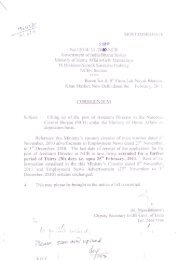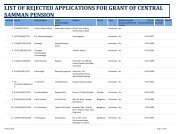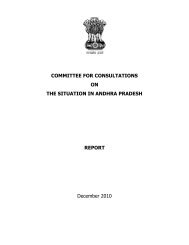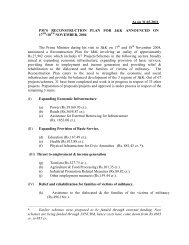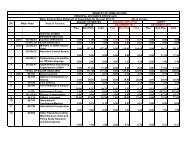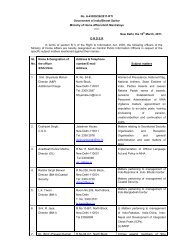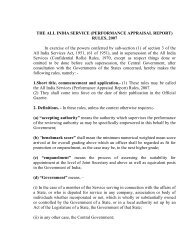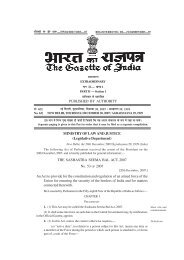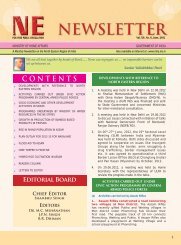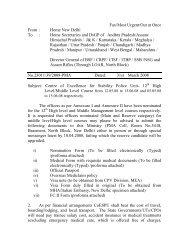Dr. Justice V.S. Malimath Report First pages - Ministry of Home Affairs
Dr. Justice V.S. Malimath Report First pages - Ministry of Home Affairs
Dr. Justice V.S. Malimath Report First pages - Ministry of Home Affairs
You also want an ePaper? Increase the reach of your titles
YUMPU automatically turns print PDFs into web optimized ePapers that Google loves.
185<br />
minor <strong>of</strong>fence get labeled as criminals and this stigma makes it difficult for<br />
them to get jobs and even a chance to reform and become useful members <strong>of</strong><br />
Society. Where such persons are sent to jail, they <strong>of</strong>ten come under the<br />
influence <strong>of</strong> hardened criminals and gravitate towards a life <strong>of</strong> crime. This is<br />
one <strong>of</strong> the reasons for suggesting fine and not imprisonment as the only<br />
punishment in respect <strong>of</strong> large number <strong>of</strong> minor <strong>of</strong>fences. This logic equally<br />
applies to increasing the number <strong>of</strong> compoundable <strong>of</strong>fences which while<br />
satisfying the victim do not affect societal interests.<br />
15.6.9 Relevant factors are the following: -<br />
?? Nature <strong>of</strong> the <strong>of</strong>fence;<br />
?? Degree <strong>of</strong> violence;<br />
?? Extent <strong>of</strong> injury to the victim<br />
?? Extent <strong>of</strong> damage to property;<br />
?? Impact on the society;<br />
?? Any discernible behaviour pattern in commission <strong>of</strong> the <strong>of</strong>fence;<br />
?? Whether alternative methods <strong>of</strong> dispute resolution like<br />
compounding or settlement would be adequate.<br />
?? Whether the victim should be compensated monetarily;<br />
?? The punishment prescribed by law for the <strong>of</strong>fence and whether<br />
that is appropriate to the act.<br />
15.6.10 Taking into consideration the above factors, it should be decided<br />
whether for each <strong>of</strong> the <strong>of</strong>fences the accused should be inflicted punishment <strong>of</strong><br />
fine or imprisonment, whether the accused should be arrested or not, whether<br />
the arrest should be with or without the order <strong>of</strong> the court, or whether the<br />
<strong>of</strong>fence should be bailable or not and whether the <strong>of</strong>fence should be<br />
compoundable or not and if compoundable, whether with or without the order <strong>of</strong><br />
the court.<br />
15.6.11 As is done in some countries it may be considered to classify the<br />
<strong>of</strong>fences into three Codes namely (1) The Social Welfare Offence Code (2) The<br />
Correctional Offence Code, (3) The Criminal Offences Code and (4) The<br />
Economic and other Offences Code.<br />
15.6.12 A Social welfare <strong>of</strong>fences Code would include <strong>of</strong>fences that are<br />
social in origin or nature and cover <strong>of</strong>fences that might be prevented through<br />
awareness programmes. For such <strong>of</strong>fences community service is preferred to<br />
jail sentence.<br />
15.6.13 The Correctional <strong>of</strong>fences Code would include non-cognizable<br />
<strong>of</strong>fences that are punishable with less than 6 months imprisonment, which need<br />
not be considered as crimes.



